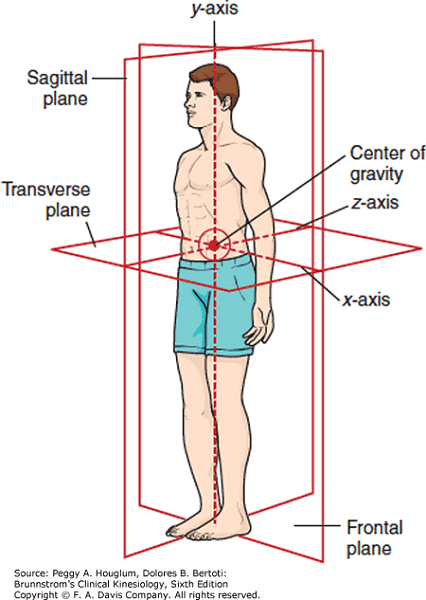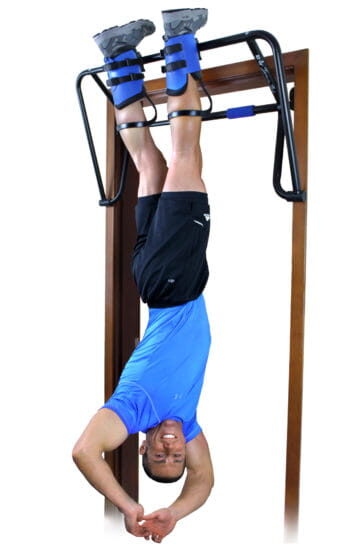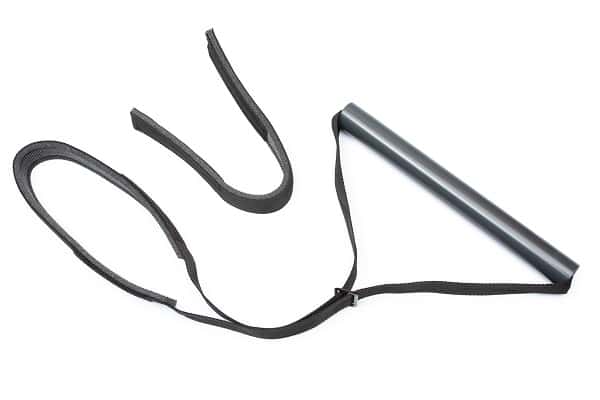Introduction: What is the Y-Strap tool?
The Y-Strap tool is a stretching tool to perform manual spine decompression.
This spine stretching tool allows spine stretching by supporting the sub-occipital region of the skull to decompress the cervical, dorsal and lumber parts of the spine.
In this blog post we will talk about the Y-Strap and other tools used for spine and cervical decompression.
Why is this stretching tool called a Y-Strap?
The Y-Strap, or y-axis traction strap to be more specific, gets its name from the body axis (Y-Axis) where the force takes place.
The Y-Axis, also known as vertical axis is aligned with the spine, head and legs.
After fastening the Y-Strap to the user’s head size with the small adjuster, the two “arms” lead to the handle bar of the y-strap that is used to perform the y strap stretch in the y-axis of the user’s body.


Inversion spinal stretching by Teeter (EZ-UP INVERSION)
Spinal traction and decompression
Spinal traction is a technique used to stretch the spine, by stretching it the discs between the vertebrae get decompressed. The main goal of stretching the spine is relaxing muscles, increasing the intervertebral foramina gap (the space between vertebrae) and reduce pressure on the nerves that exist in the spine.
There are many ways to decompress the spine, some of them are:
- Gravity streching: hanging from the feet, inverted, to stretch the lower and upper spine.
- Fully manual decompression: Using the hands to grip the back of the head and the forehead to pull the head in the Y-Axis.
- Manual tool-aided decompression: Many tools are available to help stretch the spine. To apply force they use rubber bands, weights, gravity or human strength to decompress the spine.
- Mechanical/powered spine decompression: Machines that are designed to execute spine decompression automatically and use electric power.
Manual vs Motorized mechanical traction
Manual traction has been chosen for decades as it is simple to perform, requires no expensive equipment, and the person practicing the stretch can get continuous verbal and tactile feedback. It can, however, be physically demanding and it requires focusing on the task, while motorized solutions do not need human interaction during while stretching motion happens.
Motorized solutions use a harness to hold the hip or the head and generate continuous or intermittent traction. These options are usually significantly more expensive than manual alternatives.
What is a chin strap and what is it needed for?
The Y-Strap works on its own with most users but, as the anatomic differences between humans are significant, some users with less-pronounced occipital bone may find the Y-Strap to slip.
This is when the chin strap comes into play. The chin strap allows our customers to be able to perform the Y-strap stretch on any occipital anatomy.
The chin strap is an extra piece of padded strap that is attached to the main Y-Strap via a reusable velcro system over the user’s chin to firmly stabilize the user’s head within the Y-Strap.

